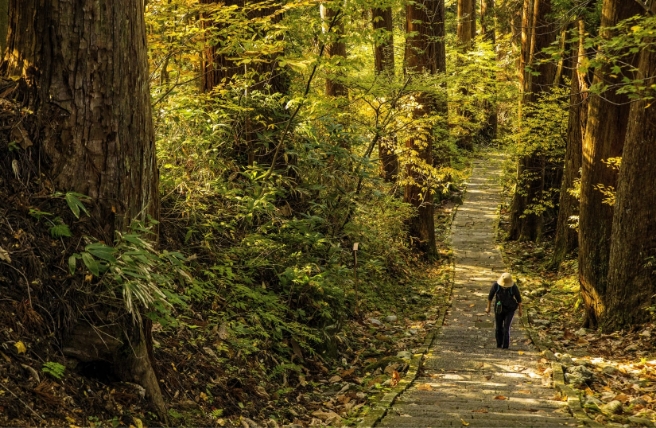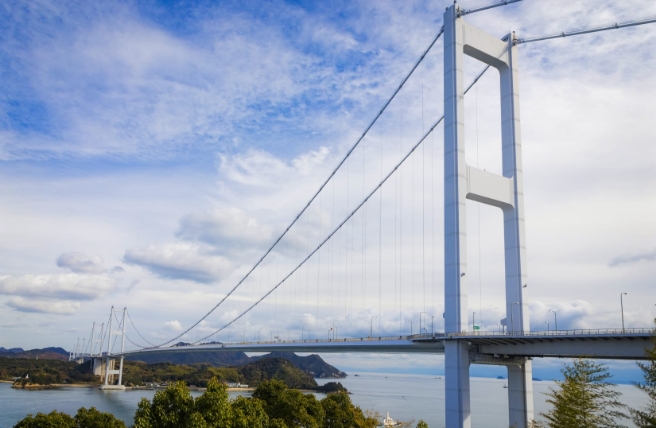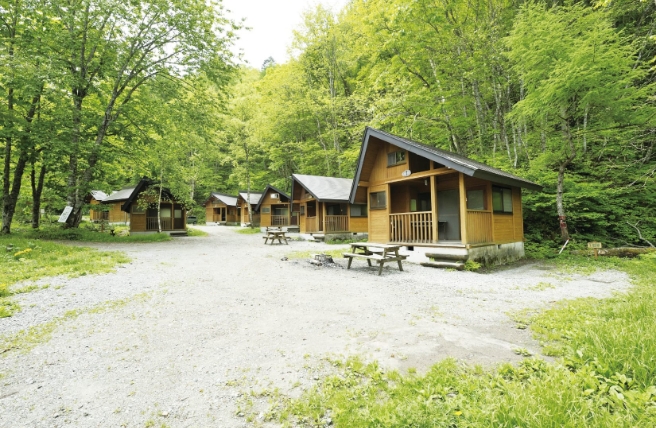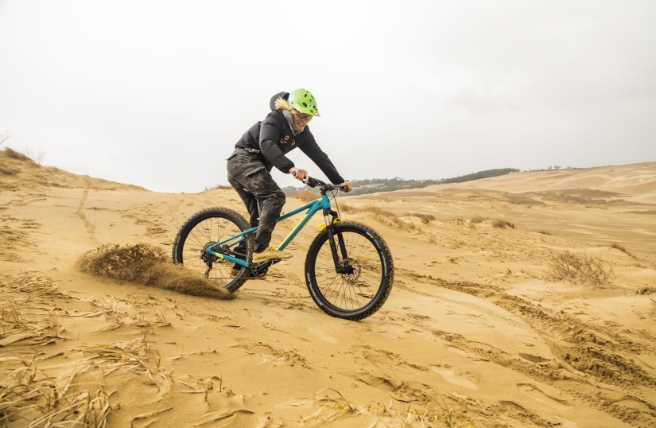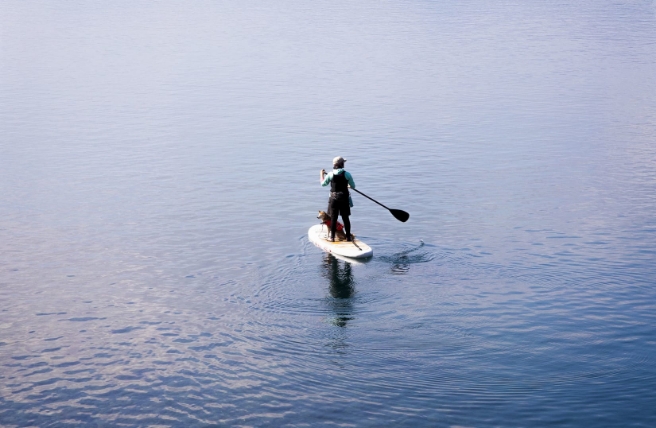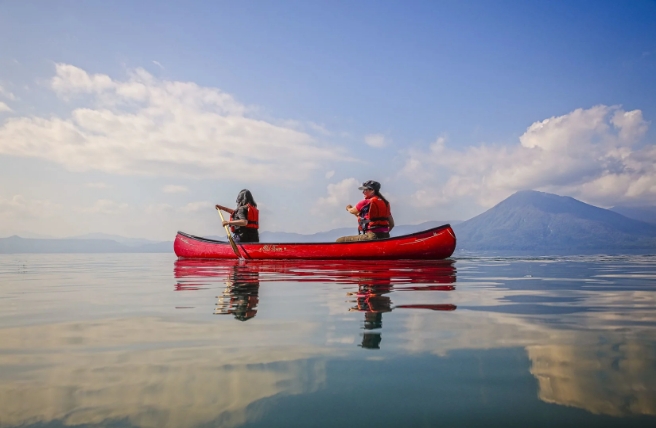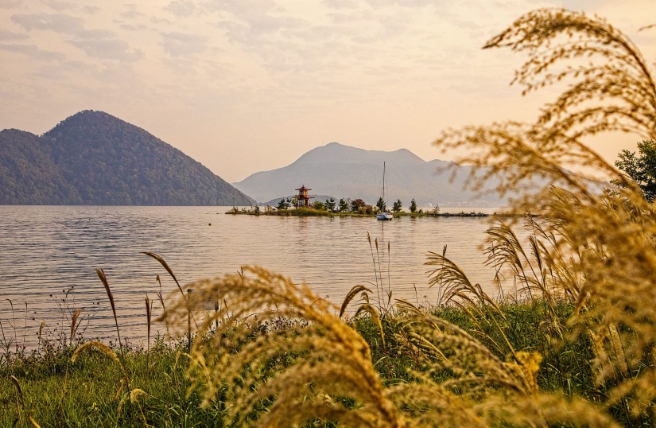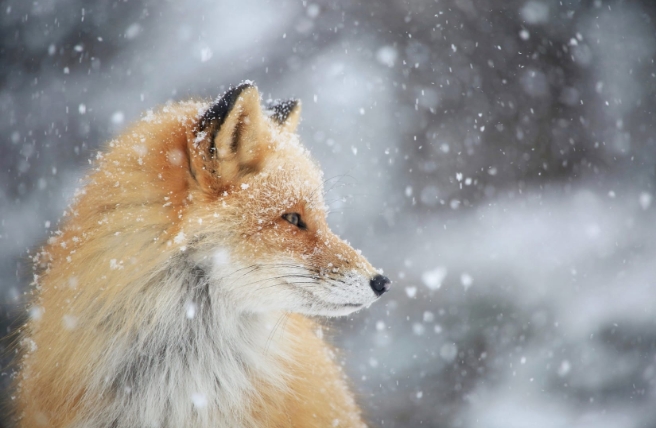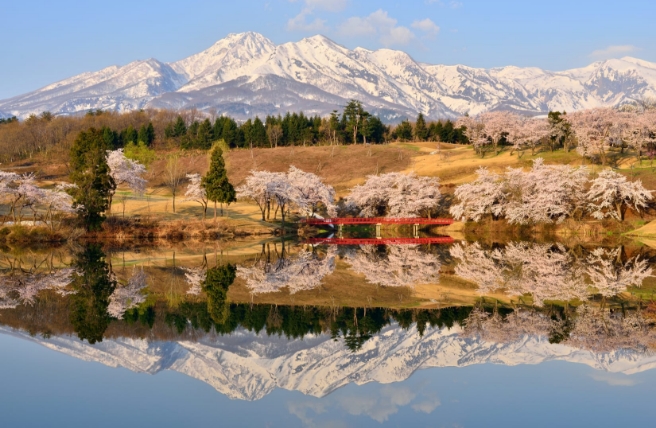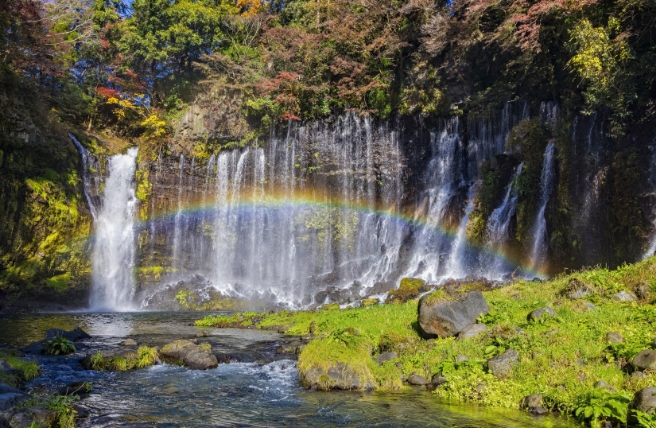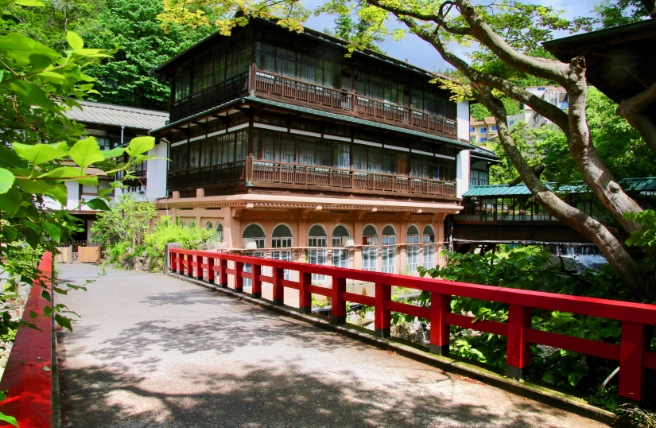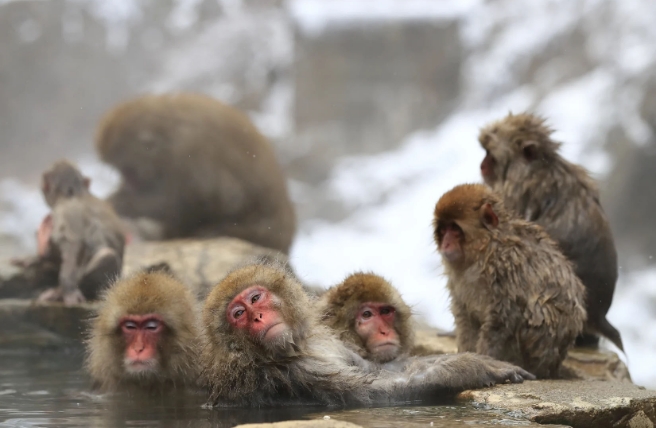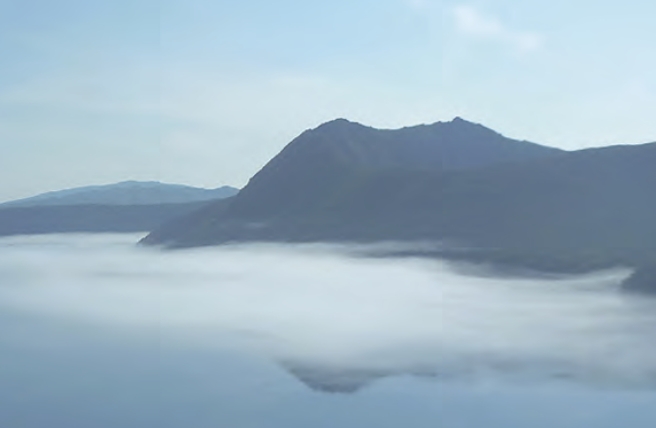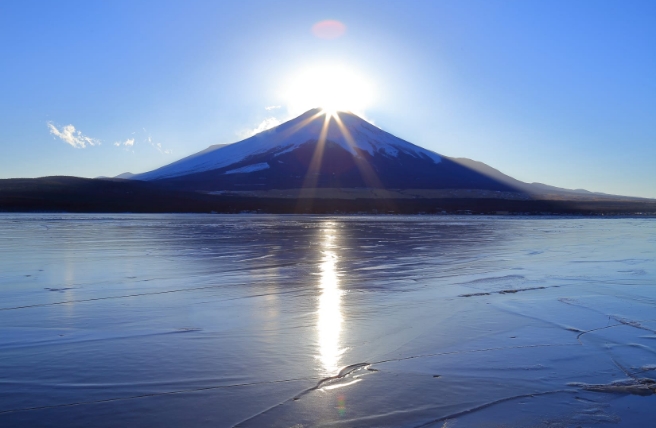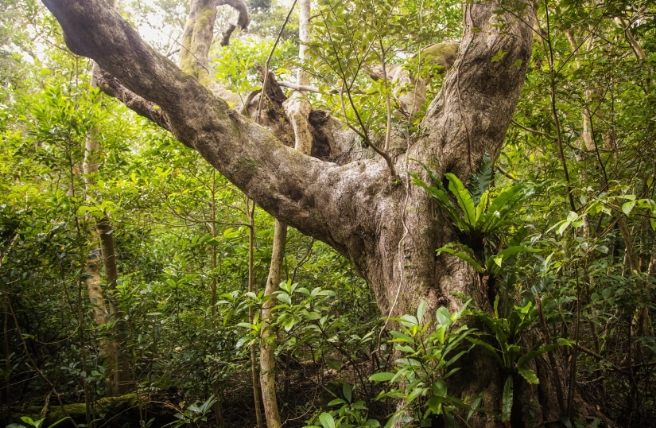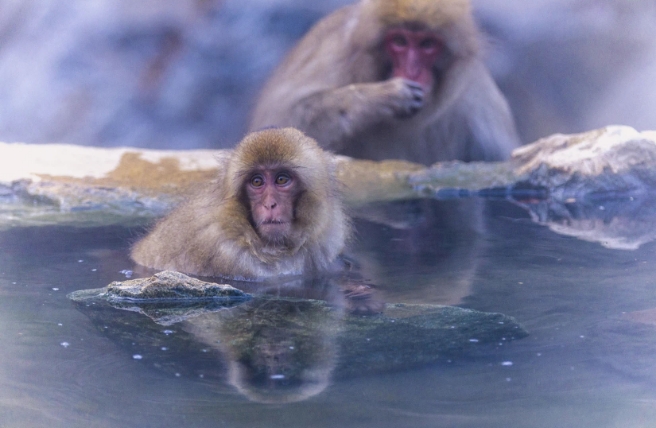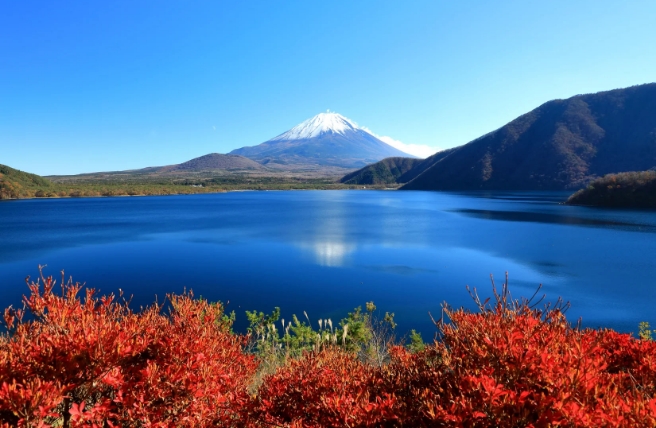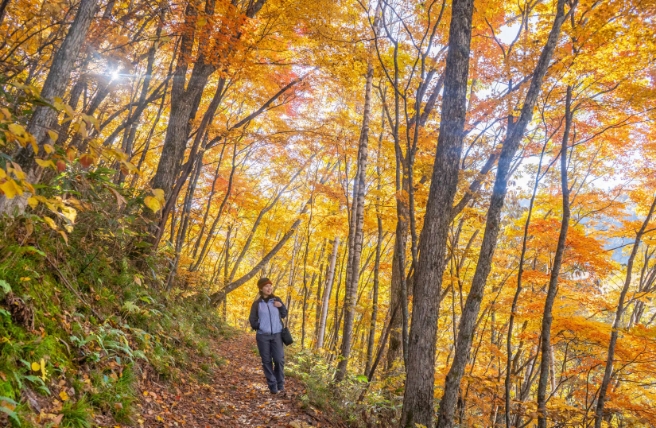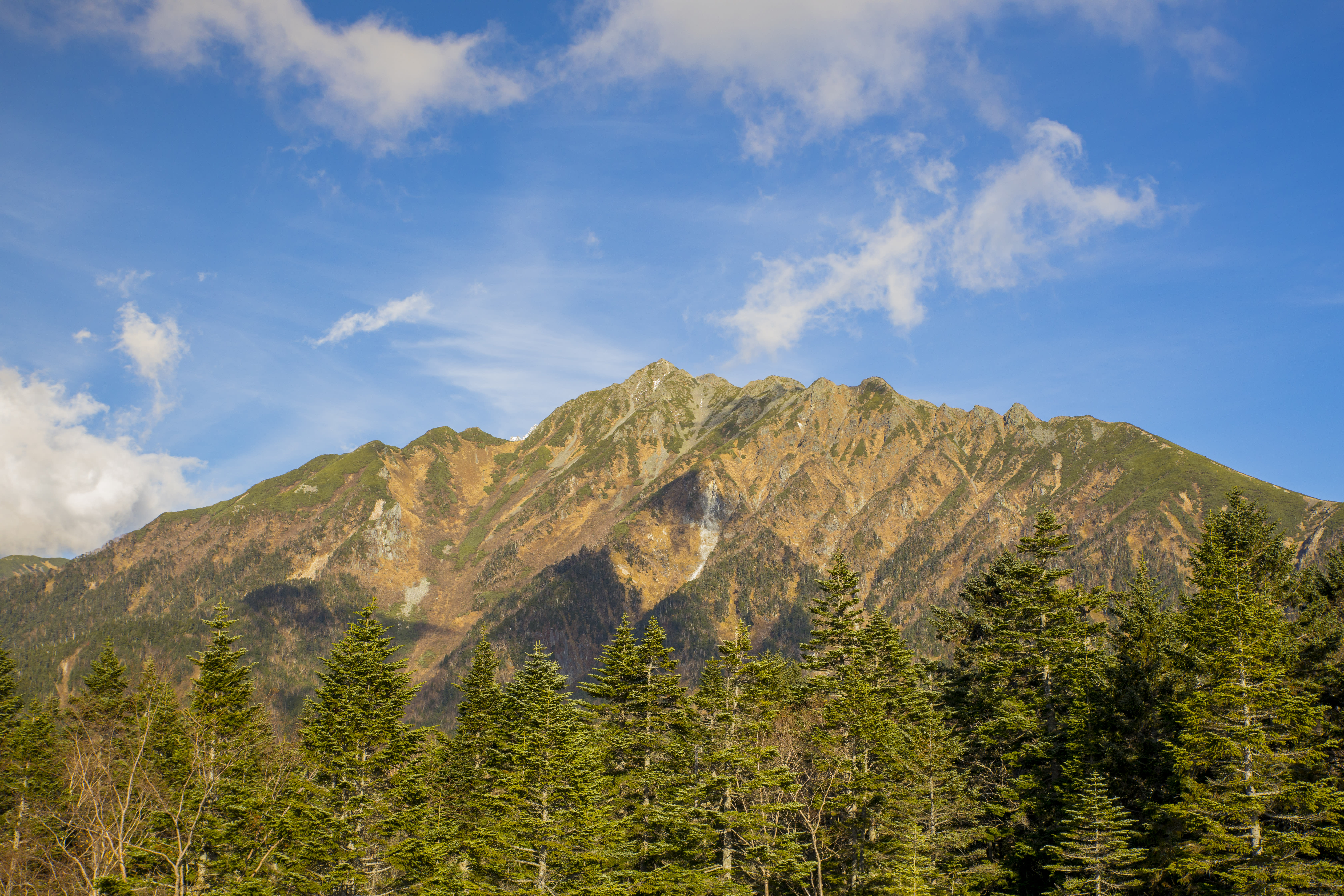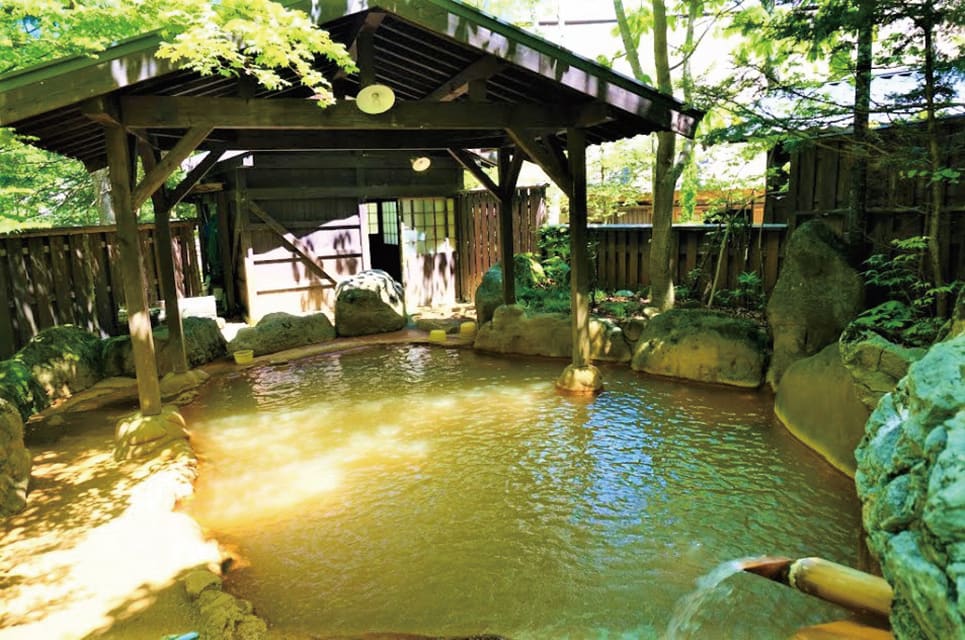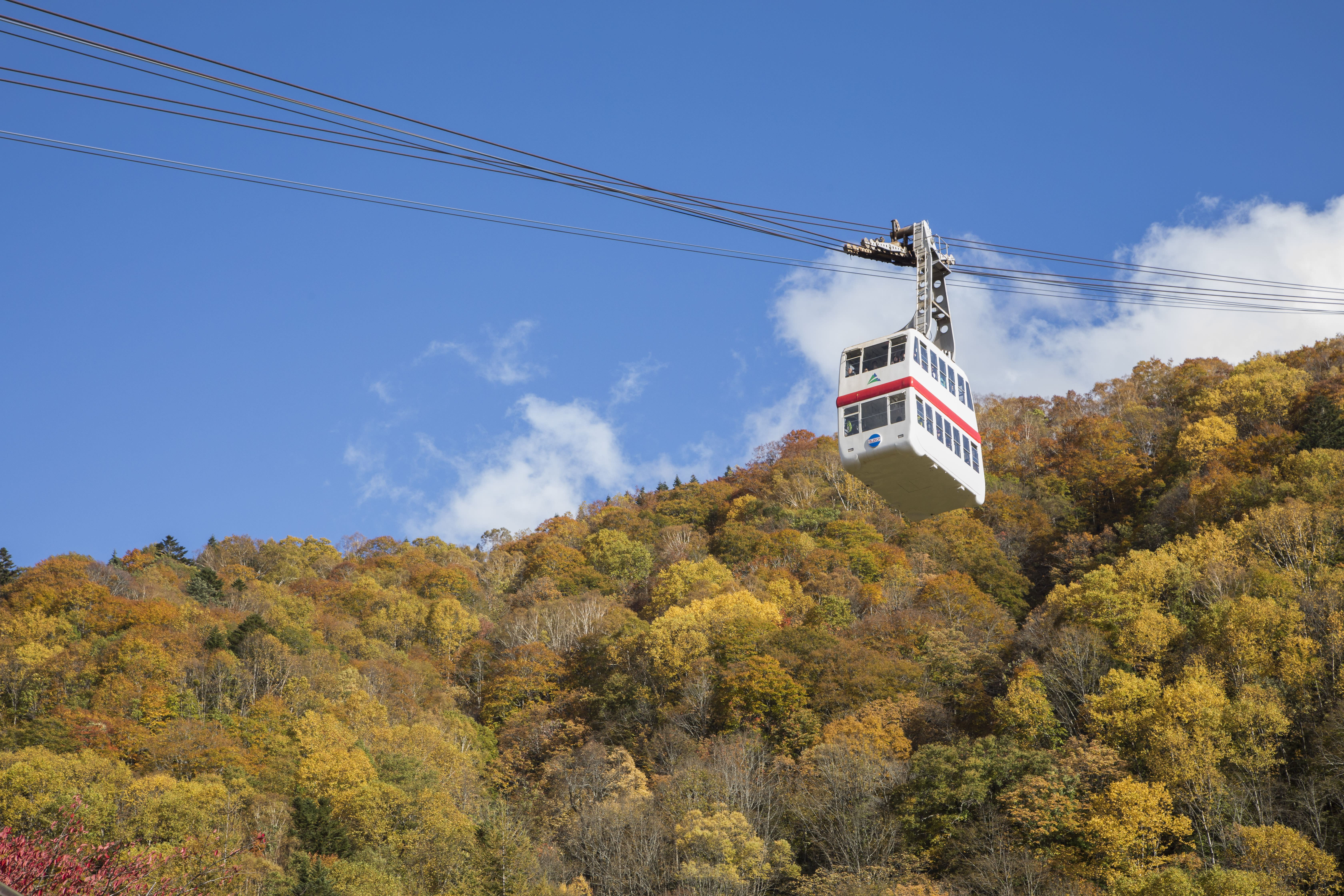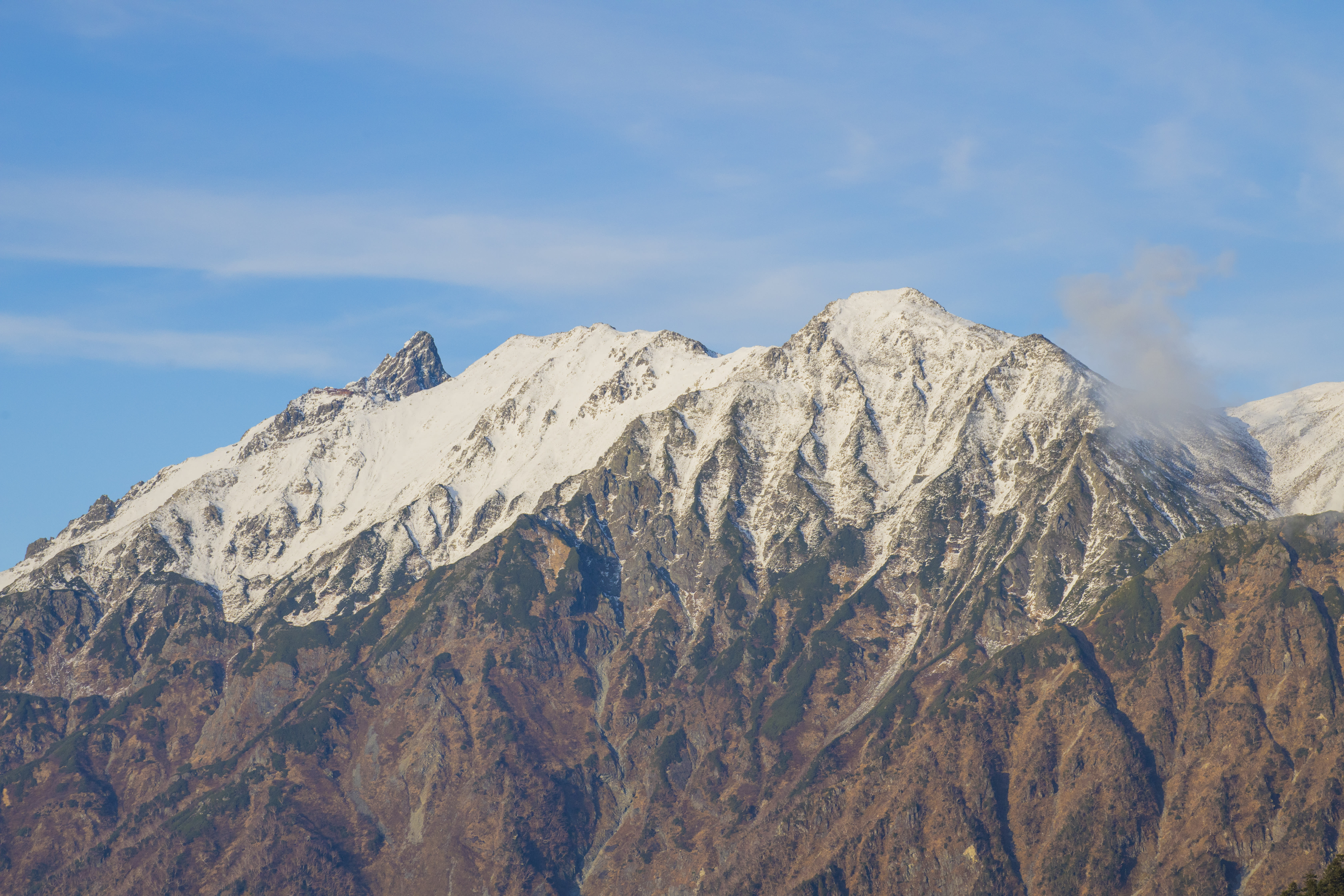Relaxing in Shinhotaka Onsen
Our destination was Shinhotaka Onsen, a hot spring town set far back in a verdant river valley. The unpretentious resort is smaller than Hirayu, popular with domestic travelers but still little known to overseas visitors. Its seclusion means immediate access to nature, with walks and cycling routes following the river and passing through white birch forests, or up into the Hotaka Mountains.
On reaching our hotel, we stepped into an entrance area with dark wooden beams in the ceiling, so huge we thought they must be whole tree trunks. Shoes off, we walked on tatami-mat floors to the lobby, passing delicately painted paper screens and a traditional irori (sunken hearth) on the way.
As with the huge beams—similar to ones we’d seen in gassho-zukuri houses—and the irori, our delicately prepared but fortifying sansai ryori dinner was rooted in the region’s traditions. Sansai ryori is a cuisine based on the mountains’ wild produce, such as foraged vegetables like earthy bamboo shoots and bitter butterbur, and freshwater fish. Other local specialties were also on the menu, like marbled Hida beef, and warming, umami hoba miso.
After dinner we enjoyed a soothing soak in the hotel’s rotenburo (outdoor baths), laden with wisteria and overlooking the rock-strewn river. Each season would change the view, the trees opposite turning red and gold in the fall, snow weighing down the branches in winter, fresh green shoots appearing as spring came around again.
Shinhotaka Onsen has an abundance of natural hot springs—some only accessible to hotel guests but others open to day-trip visitors. As well as large communal pools and secluded private ones, there are several footbaths for weary walkers dotted around the town—one even halfway up Mount Nishi-Hotakadake.
